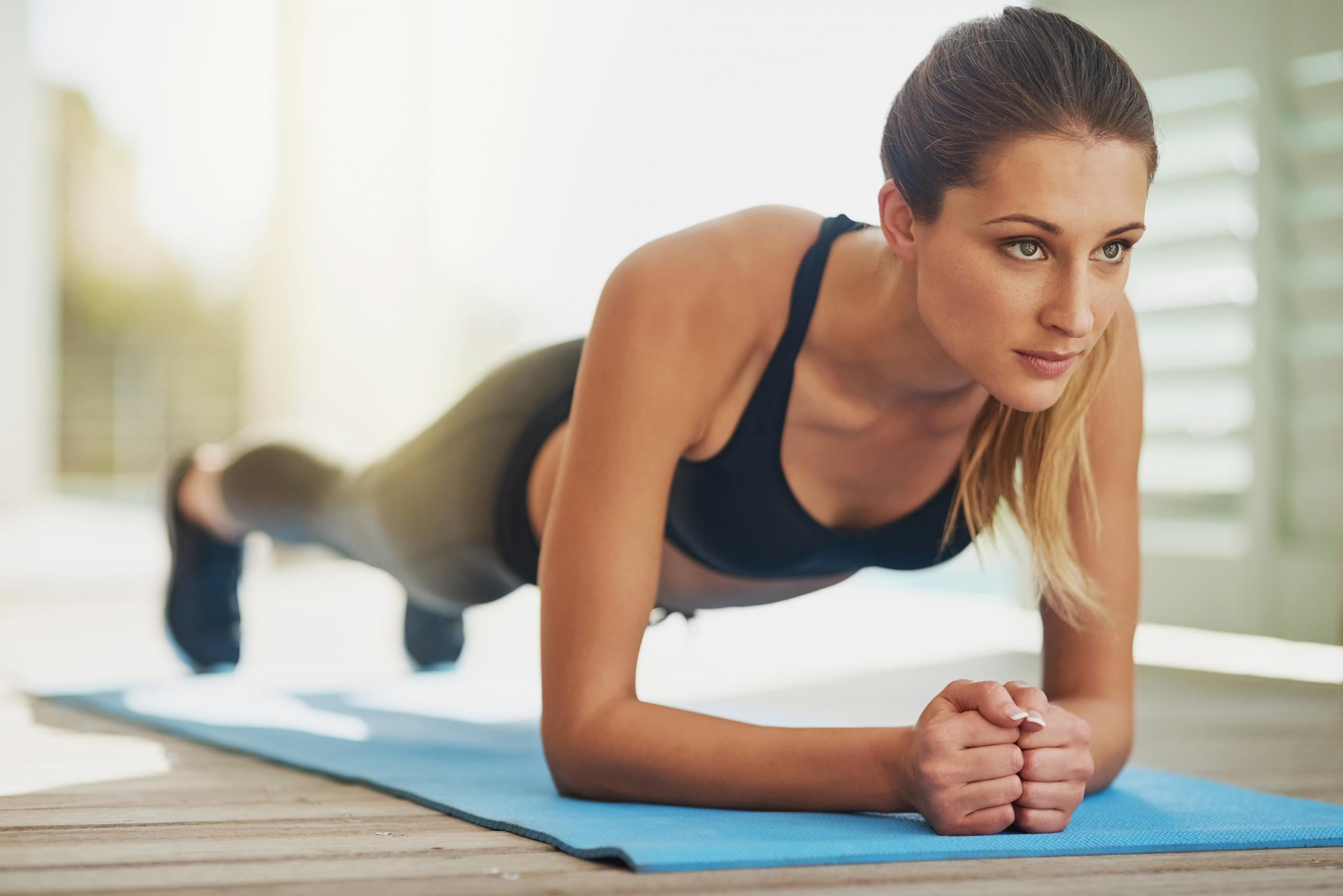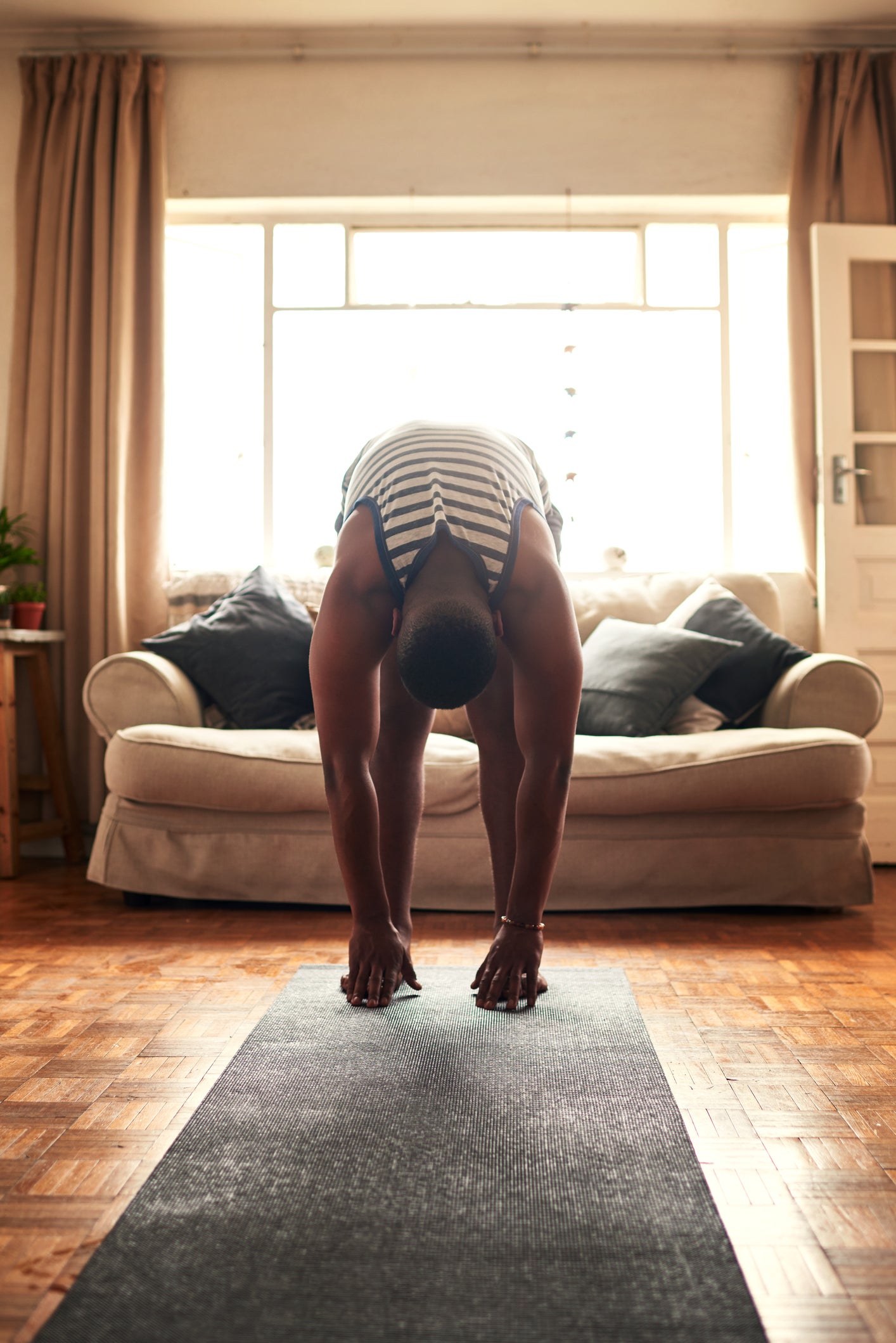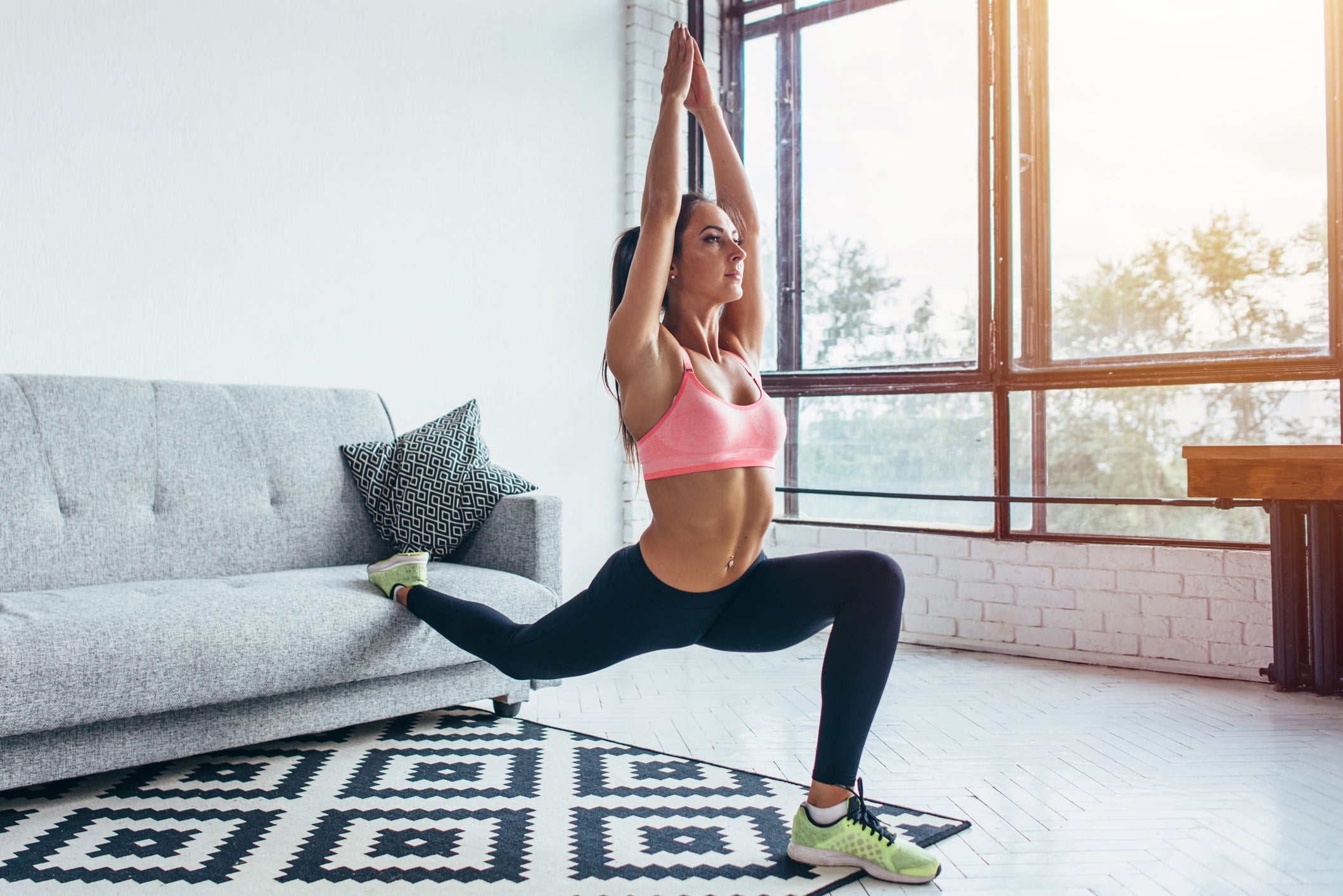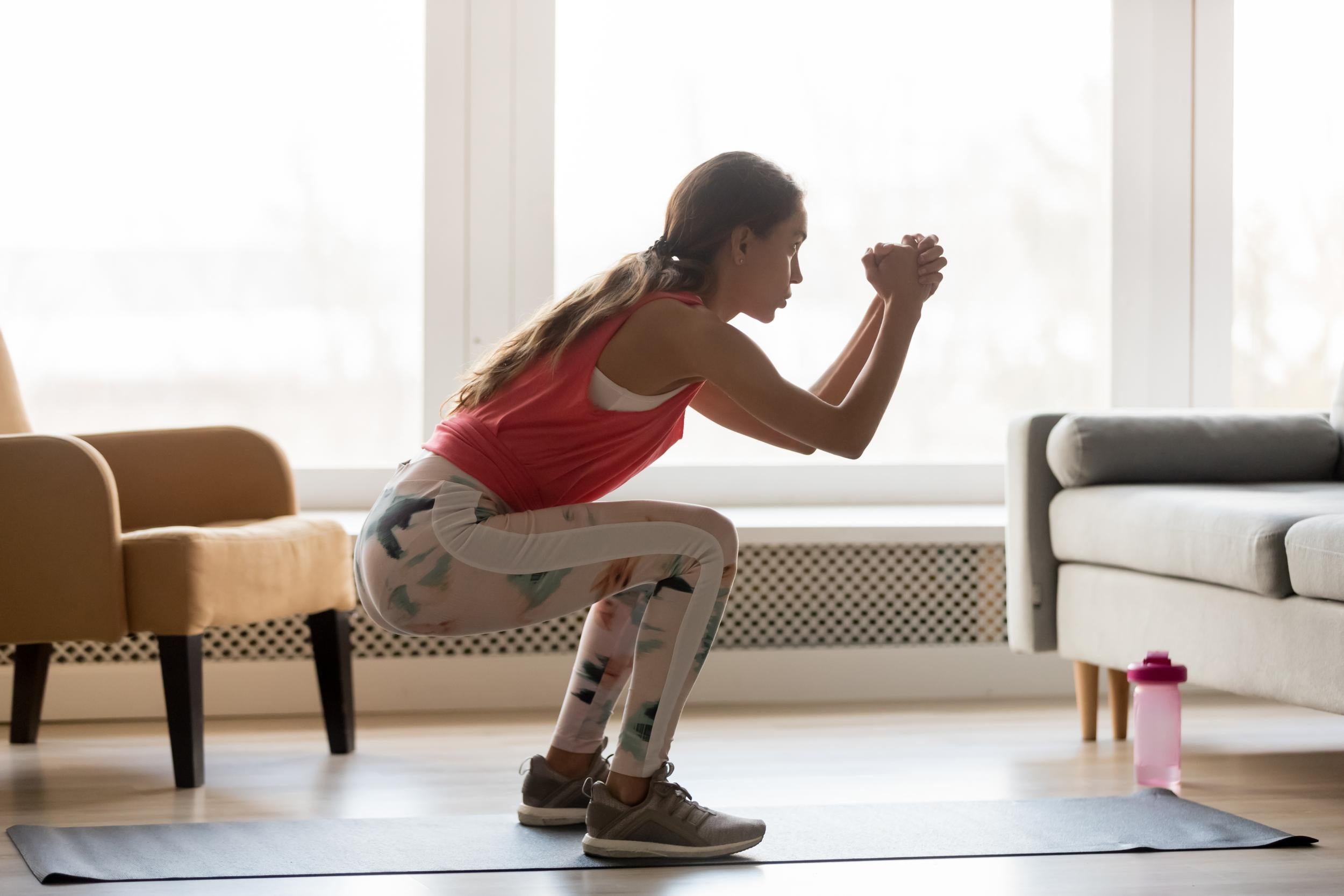How to do a full-body workout from home
No gym? No garden? No problem – all you need to stay in shape is the space to lie down in a plank position

Your support helps us to tell the story
From reproductive rights to climate change to Big Tech, The Independent is on the ground when the story is developing. Whether it's investigating the financials of Elon Musk's pro-Trump PAC or producing our latest documentary, 'The A Word', which shines a light on the American women fighting for reproductive rights, we know how important it is to parse out the facts from the messaging.
At such a critical moment in US history, we need reporters on the ground. Your donation allows us to keep sending journalists to speak to both sides of the story.
The Independent is trusted by Americans across the entire political spectrum. And unlike many other quality news outlets, we choose not to lock Americans out of our reporting and analysis with paywalls. We believe quality journalism should be available to everyone, paid for by those who can afford it.
Your support makes all the difference.With lots of gyms shut and a new set of dumbbells proving nearly impossible to find during lockdown, performing a full-body workout has become a little this year. For those of us who thought this really, truly was the year to finally get in shape, 2020 did not go as planned.
What makes things even more difficult is that few of us have the right space to exercise in. Not everyone has a garden to move around in, and not everyone can take over the living room each morning with family or housemates around. Keeping fit has become a tricky business, and we need solutions.
Luckily there still are plenty of simple exercises anyone can do to stay in shape, with just the space of a bedroom floor. You don’t even need equipment – you can use books as weights or the bed as a makeshift bench, but even they are not always necessary – or recommended.
“If there’s space to jump up and get down into a plank position, that’s great,” says Rich Tidmarsh, owner of London’s Reach Fitness, and a trainer and strength coach for clients ranging from rookies to leading rugby players like the Wales international Jamie Roberts. “Everybody is in a fairly stressful situation, but this can be a chance to use the next few weeks to perfect the basic fundamentals you need.”
Tidmarsh focuses on “uncoiling” our bodies, which he says spend too much time in an unnatural and unhealthy hunch. “When people sit at a desk all day, they get rounded shoulders,” he explains. “They curl forwards when watching TV, that horrible hunch over their iPhones – they don’t even know they’re doing it.
“Often exercises exaggerate that movement, so anything working your posterior chain – back, hamstrings, glutes – is preferable for people’s posture. That’s right the way through from beginners to professional athletes. Sprinters, boxers and UFC fighters, they’re horribly front-loaded because they’re delivering punches, kicks, so it’s about evening up to keep them injury free. But we all need it.”
Getting in some cardio is still important, of course, perhaps never more so given our lockdown lifestyles. For the majority of people, levels of NEAT (non-exercise activity thermogenesis – all the tiny bits of energy we use outside sleeping, eating and sport) have been drastically reduced as the daily walk to a train station or kids’ school run has been cut. As Steve Simmons, personal trainer at Physique Fitness, explains: “Keeping active raises our metabolism. PTs will often tell clients who sit in an office all day to aim for 10,000 steps, just so you’re expending more calories throughout the day.”
Getting outside to exercise is key, but at home, rather than launching into star jumps and burpees, it is better to use any extra time you might have gained in lockdown to focus on mobility and core. Tidmarsh draws on yoga, pilates and gymnastics to string together a workout full of strong movements.
“Running on the spot in the living room isn’t that useful,” he says. “And if you go too hard with the wrong technique you can get a bad back or a busted knee, which is even more demoralising, especially when you can’t go see the doctor or a physio. Less is sometimes more. Kneeling next to your bed, you can do mobility movements for hamstrings which can develop your squat position. For the majority of people, if you asked them to do a squat it’s going to look ugly! So we work to make that look better.”
Here are two workouts to try at home:
Rich Tidmarsh’s bedroom workout, owner and lead trainer at Reach Fitness

Jefferson curls – Sand at the back of your space, feet hip-width apart. Tuck chin to chest and slowly roll forward, taking your hands down your legs towards the floor. The aim being to create space through your back and hamstrings. Slowly return to standing.
Walk out – From a Jefferson curl, walk your hands out across the floor into a plank position up on your hands. To return, lift you hips up and walk your feet back to your feet, rolling up your spine back to standing.
Striders – In plank position, up on your hands, take a wide step forward on one side bringing your foot close to the outside of your hand. Lift your chest to create space then step back into plank and repeat on alternating sides.
Ape hold – From a standing position drop into a low squat, keeping your heels grounded and chest up. Place your elbows on the inside of your knees and push them out to help create space in your hips. Breath and relax into the shape, keeping your spine positive.
Superman – From an all fours position, on your hands and knees, alternately extend opposite arm and leg maintaining your balance and level hips. Bring back to neutral and repeat side to side.
To stream Rich's online video series for free, click here and use code STAYHOME at the counter.
Steve Simmons’ bedroom workout, personal trainer at Physique Fitness
Warm Up
- Marching on the spot 30 seconds
- Jogging on the spot for 30 seconds
- 15 bodyweight squats – Lowering the hips from a standing position by flexing at the knees. Your feet should stay flat on the floor and your knees should not travel in front of your toes. The main muscles worked are your quads and glutes
Circuit
Perform these exercises for the set amount of repetitions before moving onto the next one. Once completed, run through them again (beginner x2, intermediate x3, advanced x5)
- Bulgarian split squat (10 repetitions on each leg)
Main muscles used – quads. Other supporting muscles – core, glutes. This is a version of a single-leg squat. Place one leg back onto a sofa or bed either on your toes or with the top of your foot in contact with the object. From this position lower yourself down slowly by flexing the knee of the standing leg. Make sure the foot stays flat on the floor and do not allow the knee to travel forward past your toes. Once you have created at least a 90-degree angle at the knee joint push through the floor to straighten that leg.

- Press-ups (as many as you can)
Main muscles used – pectorals, deltoids, triceps, core (chest, shoulders, back of arm). Depending on your ability you will start by either being on your hands and feet or hands and knees. If going from your knees simply drip down to your knees from the position demonstrated above. Pace your hands shoulder width apart and make sure your hands sit underneath your shoulders. From this position you slowly lower your chest down to the ground so that your torso is hovering just above the floor. From this position push your body back up to the starting position by driving your hands into the floor.
- Squats (10 hold, 8 hold, 6 hold)
Main muscles – quads, glutes, core. Using the same technique as explained in the warm-up, perform 10 repetitions and on the 10th repetition hold the squat at the bottom of the movement for 10 seconds, then come up and perform 8 squats and hold the 8th one at the bottom of the movement for 10 seconds, and then the same again for 6 reps.

- Plank hold (1 minute)
Main muscles used – core (abdominals, obliques, erector spinae).
Join our commenting forum
Join thought-provoking conversations, follow other Independent readers and see their replies
Comments